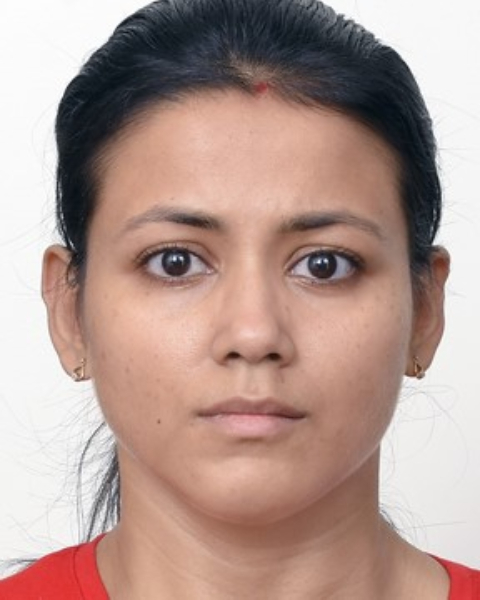PQA 07 - PQA 07 Gastrointestinal Cancer and Sarcoma/Cutaneous Tumors Poster Q&A
2970 - A Prospective Study to Assess the Role of Neo-Adjuvant Chemoradiation in Locally Advanced Carcinoma Gallbladder
Tuesday, October 1, 2024
12:45 PM - 2:00 PM ET
Location: Hall C
Screen: 19

Treshita Dey, MD
PGIMER Chandigarh
Chandigarh, Chandigarh
Presenter(s)
D. Khosla, T. Dey, R. Kapoor, R. Gupta, M. Kumar, S. S. Rana, H. Singh, K. Periasamy, R. Madan, and S. Goyal; Post Graduate Institute of Medical Education and Research, Chandigarh, India
Purpose/Objective(s): Gallbladder cancer is aggressive with poor prognosis despite advancements in diagnostics and treatments. Surgical resection with clear margins is standard, but many patients receive palliative chemotherapy when surgery isnt an option. Neoadjuvant chemoradiation (NACRT) before surgery offers hope, potentially shrinking tumors, enhancing operability, and eradicating micro-metastases. Our study evaluates its effects on resectability, survival, and toxicity in locally advanced cases. Materials/
Methods: In this prospective phase 2 study at a North Indian tertiary cancer center, patients with histologically confirmed gallbladder cancer and locally advanced unresectable tumors (T3/T4 or N1 per AJCC 8th, or >2 cm liver or extrahepatic bile duct invasion) were enrolled. All patients underwent chemotherapy before NACRT with gemcitabine+platinum. Patients showing at least stable disease or minimal local progression were eligible for chemoradiation. For treatment planning, all patients underwent CECT abdomen, GTV was delineated (primary tumor+involved nodes) with 1cm isotropic margin for CTV, and PTV with 5–7 mm margin, delivering 45Gy/25#/5 weeks with simultaneous integrated GTV boost to 50Gy, along with concurrent gemcitabine or capecitabine. Patients were assessed weekly for acute toxicities (CTCAE v4) throughout NACRT, with response evaluated 4 weeks post-NACRT via CECT/PET-CT. Surgery was considered for partial or good responders. Survival analysis was done using Kaplan Meier curves, with significance set at p<0.05.
Results: In this study, 22 patients were enrolled. Among them, 13 were female (59.1%), with median age of 52.5 years (range 35-72). Those with ECOG PS-0 comprised 45.5%, while the remainder had PS-1. The predominant initial symptom was non-specific abdominal pain (12,54.5%), followed by jaundice (8,36.4%), with a median duration of 6 months. The majority of patients (81.8%) were diagnosed with stage 3B, followed by 4A(13.6%). All patients completed NACRT without any treatment breaks. Hematological toxicities (Gr1:3, Gr2:6) and gastrointestinal toxicities (Gr1-4, Gr2-5) were observed in 9 patients each. Half of them underwent surgery, with 3 (13.6%) achieving pCR (pathological complete response), while the rest had residual disease (yT1 3, 13.6%; yT2 5, 22.7%; yT3 3, 13.6%). At a median follow-up of 19.6 months, 50% of patients were alive, with a median OS of 22.1 months (not reached for surgery vs 20.9 months without surgery). Thirteen patients (4 post-surgery) experienced disease relapse: 1 local, 7 local+distant, and 4 nodal+distant, with a median PFS of 16.5 months (not reached for surgery vs 16.5 months without surgery) but those 3 with pCR did not show any signs of progression. Patients who underwent surgery showed significantly improved OS (p=0.034) and PFS (p=0.02).
Conclusion: NACRT offers potential benefits for locally advanced, inoperable gallbladder carcinoma, aiding in achieving a curative resection and improving survival prospects.
Purpose/Objective(s): Gallbladder cancer is aggressive with poor prognosis despite advancements in diagnostics and treatments. Surgical resection with clear margins is standard, but many patients receive palliative chemotherapy when surgery isnt an option. Neoadjuvant chemoradiation (NACRT) before surgery offers hope, potentially shrinking tumors, enhancing operability, and eradicating micro-metastases. Our study evaluates its effects on resectability, survival, and toxicity in locally advanced cases. Materials/
Methods: In this prospective phase 2 study at a North Indian tertiary cancer center, patients with histologically confirmed gallbladder cancer and locally advanced unresectable tumors (T3/T4 or N1 per AJCC 8th, or >2 cm liver or extrahepatic bile duct invasion) were enrolled. All patients underwent chemotherapy before NACRT with gemcitabine+platinum. Patients showing at least stable disease or minimal local progression were eligible for chemoradiation. For treatment planning, all patients underwent CECT abdomen, GTV was delineated (primary tumor+involved nodes) with 1cm isotropic margin for CTV, and PTV with 5–7 mm margin, delivering 45Gy/25#/5 weeks with simultaneous integrated GTV boost to 50Gy, along with concurrent gemcitabine or capecitabine. Patients were assessed weekly for acute toxicities (CTCAE v4) throughout NACRT, with response evaluated 4 weeks post-NACRT via CECT/PET-CT. Surgery was considered for partial or good responders. Survival analysis was done using Kaplan Meier curves, with significance set at p<0.05.
Results: In this study, 22 patients were enrolled. Among them, 13 were female (59.1%), with median age of 52.5 years (range 35-72). Those with ECOG PS-0 comprised 45.5%, while the remainder had PS-1. The predominant initial symptom was non-specific abdominal pain (12,54.5%), followed by jaundice (8,36.4%), with a median duration of 6 months. The majority of patients (81.8%) were diagnosed with stage 3B, followed by 4A(13.6%). All patients completed NACRT without any treatment breaks. Hematological toxicities (Gr1:3, Gr2:6) and gastrointestinal toxicities (Gr1-4, Gr2-5) were observed in 9 patients each. Half of them underwent surgery, with 3 (13.6%) achieving pCR (pathological complete response), while the rest had residual disease (yT1 3, 13.6%; yT2 5, 22.7%; yT3 3, 13.6%). At a median follow-up of 19.6 months, 50% of patients were alive, with a median OS of 22.1 months (not reached for surgery vs 20.9 months without surgery). Thirteen patients (4 post-surgery) experienced disease relapse: 1 local, 7 local+distant, and 4 nodal+distant, with a median PFS of 16.5 months (not reached for surgery vs 16.5 months without surgery) but those 3 with pCR did not show any signs of progression. Patients who underwent surgery showed significantly improved OS (p=0.034) and PFS (p=0.02).
Conclusion: NACRT offers potential benefits for locally advanced, inoperable gallbladder carcinoma, aiding in achieving a curative resection and improving survival prospects.
